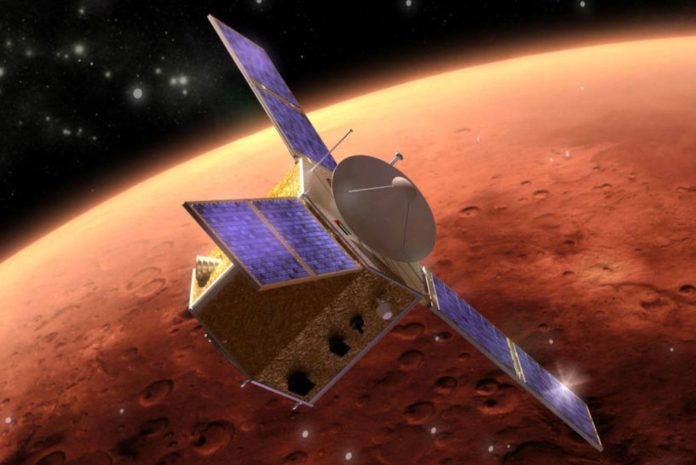Locating the best areas with ice on the Red Planet will facilitate the extraction of water for astronauts, both for consumption and for rocket fuel
NASA has just published a map with information about the ice that lies beneath the surface of Mars, which is to help future explorers when landing on the Red Planet.
The research team located all the ice that is less than 2.5 centimetres below the surface of Mars, identifying at least one landing site conducive to future space missions: a large area in the Arcadia Planitia of the northern hemisphere. This area has a lot of ice near the surface and is in the ideal place for a human mission on Mars since it is in a temperate region of medium latitude with lots of sunlight, says the research team in a new study published in the scientific journal ‘ Geophysical Research Letters ‘.
“You wouldn’t need an excavator to dig up this ice, you could use a shovel, ” the study’s lead author, Sylvain Piqueux, who studies planetary surfaces at NASA’s Jet Propulsion Laboratory in California (United States) tells Live Science. “We continue to collect data on ice buried on Mars, defining the best places for astronauts to land .” According to NASA, more studies could locate more potential landing sites.
Water, vital for the mission
Water is a vital resource for future astronaut missions to Mars, where NASA wants to land in 2030. It is expected that, instead of transporting the necessary water for all astronauts, they can obtain it, as well as oxygen and hydrogen for rocket fuel, on the Red Planet itself.
The data has been obtained from measurements obtained by the Mars Reconnaissance Orbiter and Mars Odyssey spacecraft, which use heat-sensitive instruments to locate the ice because buried ice changes the surface temperature. To be sure that what they were seeing was ice, the scientists contrasted their work with other data, such as ice seen on radar instruments and the Mars Odyssey gamma-ray spectrometer, which is optimized to detect water ice deposits.
